In this article, we will cover 60 mind-blowing facts about Indian Railways. But before we really dive deep into the facts, let’s go through the quick history.
The Indian Railways, renowned as one of the largest and busiest railway networks in the world, is an integral part of India’s identity and cultural fabric.
With its extensive reach, a diverse range of trains, and remarkable engineering marvels, the Indian Railways has revolutionized transportation, connecting remote corners of the country and facilitating the movement of millions of passengers and tons of freight each day.
This vast railway network has a fascinating array of facts, spanning from impressive infrastructure projects to innovative initiatives, making it a subject of awe and curiosity for both Indians and global observers.
Indian railways have helped the nation travel for the past 170 years. It has 19 zones with over 7,349 stations and over a route of 108486 km.
In this article, we will delve into a collection of mind-blowing facts about the Indian Railways, shedding light on its scale, historical significance, technological advancements, and the unique experiences it offers to passengers. So, fasten your seatbelts (or rather, hold on to your seats) as we embark on an exhilarating journey through the fascinating world of the Indian Railways.
60 Facts About Indian Railways
1. Maiden Journey
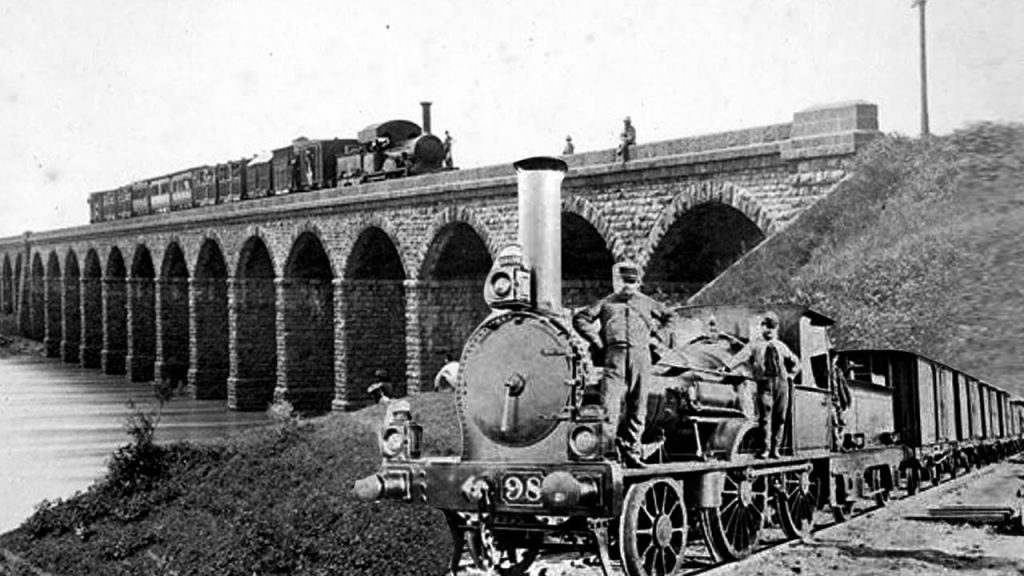
The first train on Indian soil took its maiden Journey from Bombay’s Bori Bunder Station to Thane on April 16, 1853. The 14-carriage train was hauled by three steam locomotives: the Sahib, Sindh, and Sultan. The train traveled 34 kilometers and carried 400 people. The day was declared a Public Holiday.
2. Largest Rail Network in Asia
Indian railways has a route of 67,415 kilometers making it the largest rail network in Asia and the fourth-largest in the world. It is also the world’s second-largest railway network operated under single management. It runs 12,617 trains to carry more than 23 million passengers per day. During this journey, it connects more than 7,172 stations across India.
3. Carries 23 Million Passengers Daily
Indian Railways carries over 23 million passengers daily (the entire population of Australia).
4. World’s Largest Route Relay Interlocking System
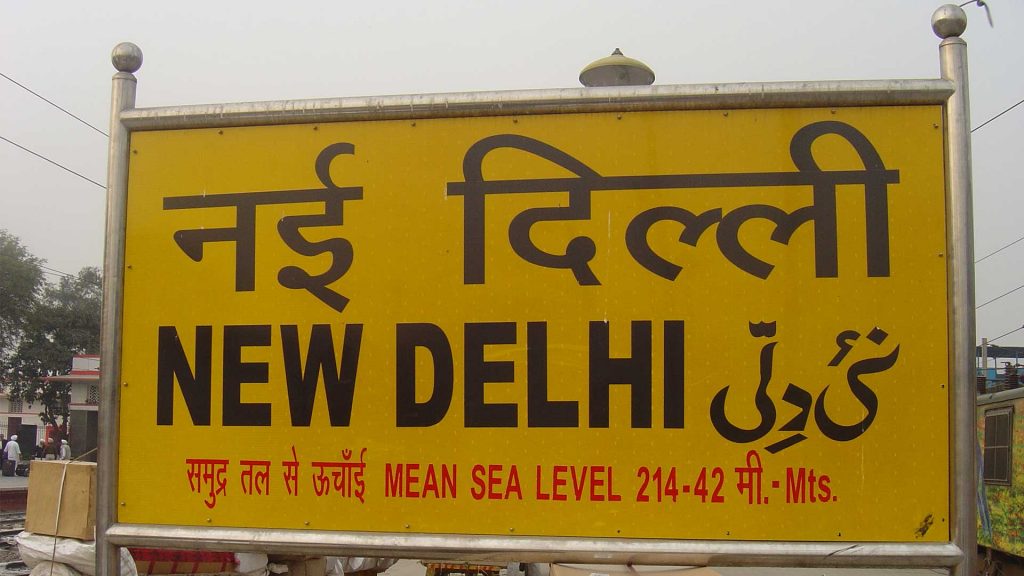
The New Delhi Railway Station has secured a place in the Guinness Book of Records for having the World’s largest Route Relay Interlocking System.
5. Amongst the Largest Employer
Indian Railways is one of the world’s largest employers with over 1.4 million people it ranks #7 according to Economist Magazine.
6. Oldest Working Steam Locomotive
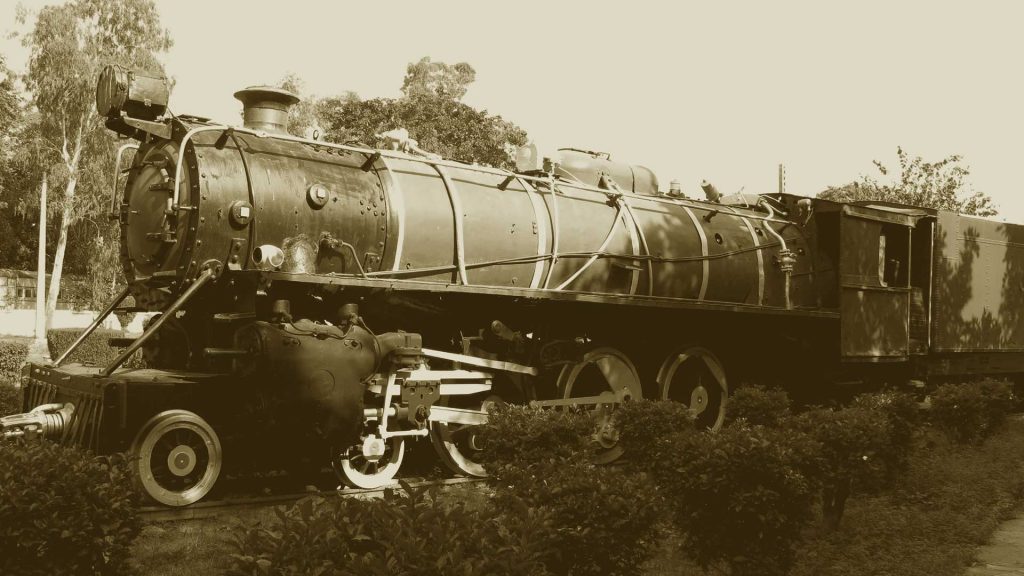
The Fairy Queen train that runs between New Delhi and Alwar, Rajasthan is the oldest functioning steam locomotive in the world. The train was certified by the Guinness Book of Records in 1998.
7. Longest Running Non-Stop Train
Trivandrum Hazrat Nizamuddin Rajdhani Express is the longest-running non-stop train that covers a distance of 528 km without even a single stop.
8. Highest Rail Bridges in the World
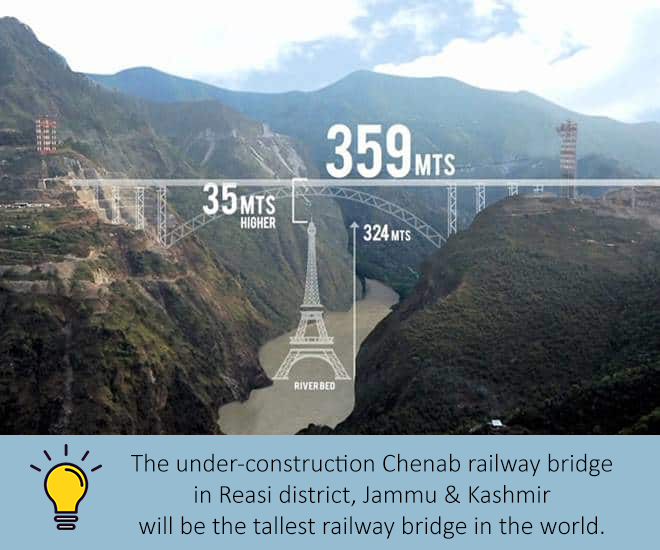
The under-construction Chenab railway bridge in Reasi district, Jammu & Kashmir will be the tallest railway bridge in the world.
Five times taller than Qutab Minar.
9. World’s Longest Railway Platform
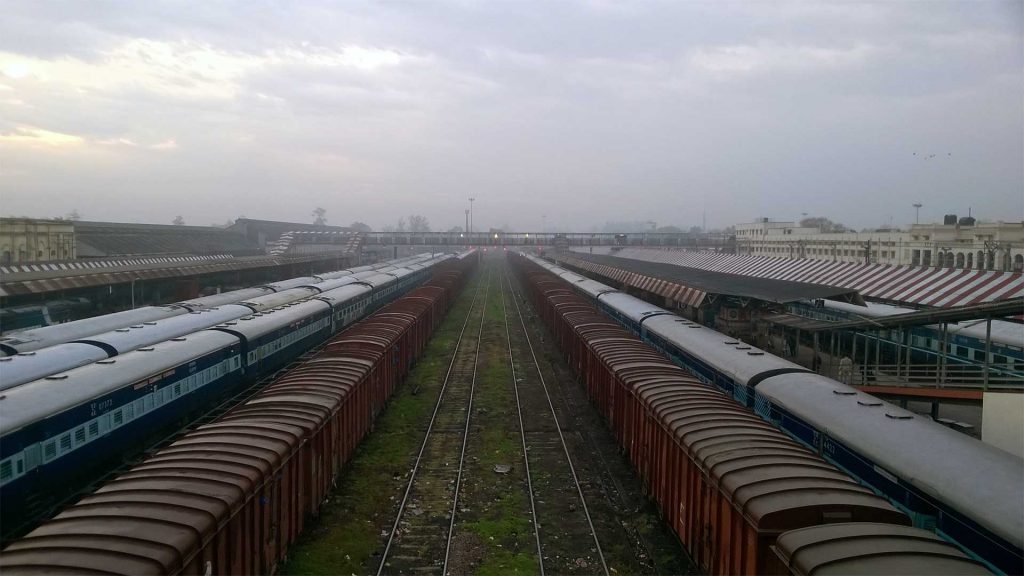
Gorakhpur Junction railway station is the world’s most extended railway platform (length of 1,366.33 m).
10. Slowest Train in India
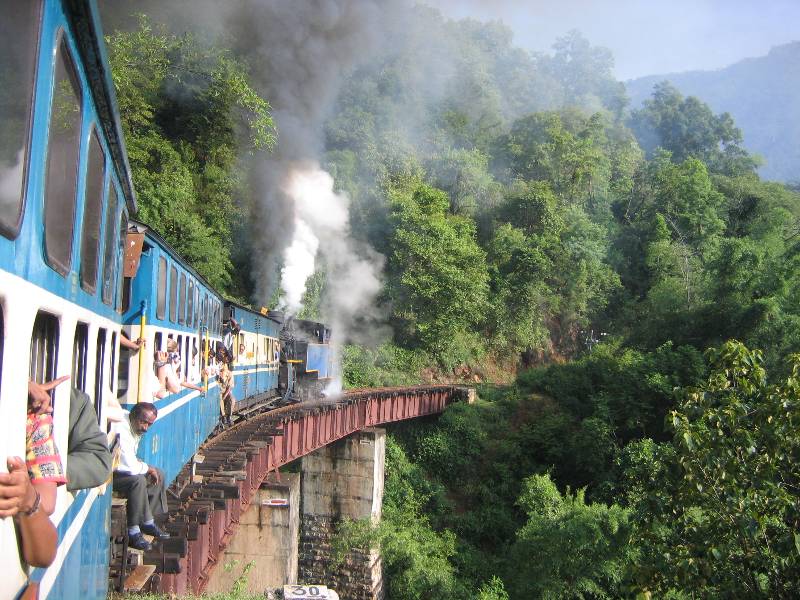
Mettupalayam Ooty Nilgiri passenger train is the slowest train in India. It runs at a speed of 10 km/h.
11. Highest Railway Station in India
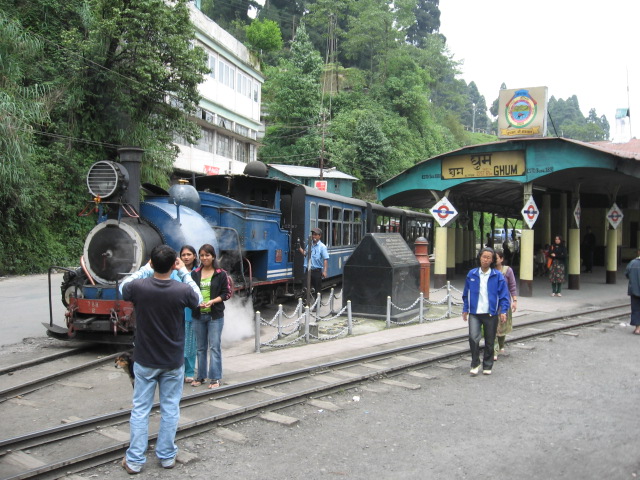
Ghum Railway station of the Darjeeling Himalayan Railway is the highest railway station in India.
12. Train Finally Had Toilets
After 50 years of the formation of Indian Railways, the train finally had toilets. Thanks go to a passenger Okhil Chandra Sen who wrote a furious letter to Indian Railway in 1909.
The transcript of the letter can still be seen on display in the Railway Museum.
13. Longest Tunnel
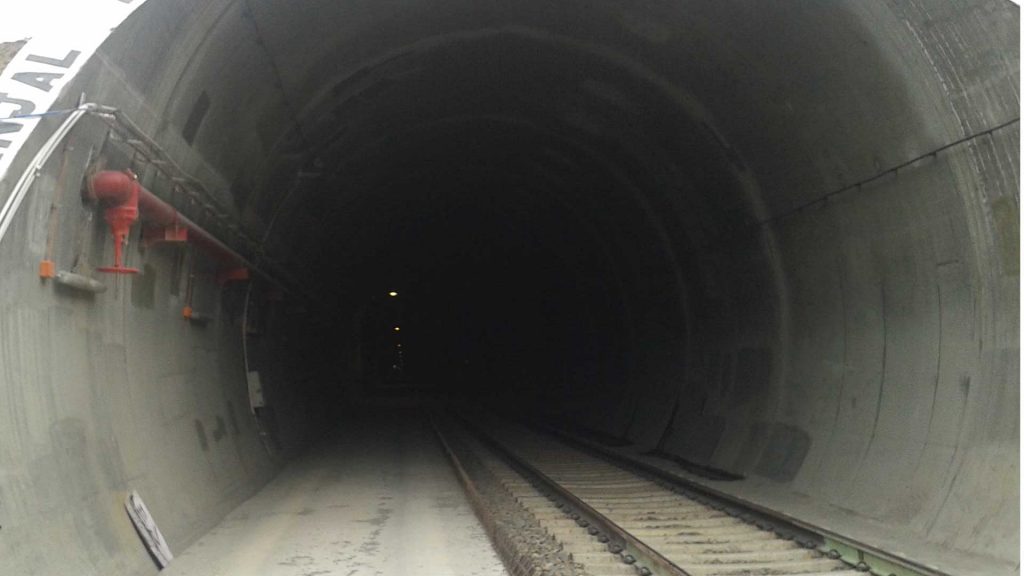
The longest tunnel is Pir Panjal Railway Tunnel, Jammu and Kashmir. It is 11.25 km long.
14. Most Unreliable Long Distance Train
The Guwahati Thiruvananthapuram Express holds the record for the most unreliable train. On average, it gets delayed 10-12 hours.
15. The Longest Rail Bridge
The Bogibeel Bridge in Assam is the longest railway bridge in India, stretching over 4.94 kilometers.
It is a vital infrastructure project that has significantly improved connectivity and transportation in the northeastern region of India. It has brought immense socio-economic benefits to this region, facilitating the smoother movement of goods, people, and vehicles.
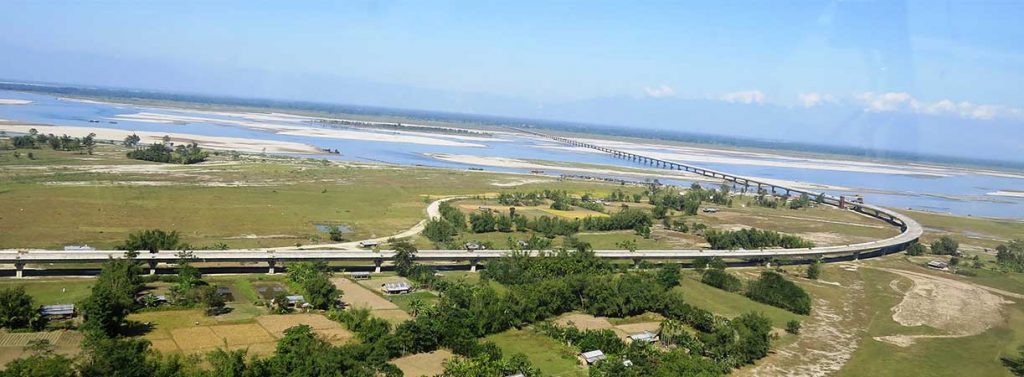
The second longest rail bridge in Indian Railways is Vembanad Rail Bridge, Kerala. It is 4.62 km long.
16. Shortest Name
Ib Railway station of Odisha has the shortest name in the station of the Indian Railways
17. Oldest Railway System
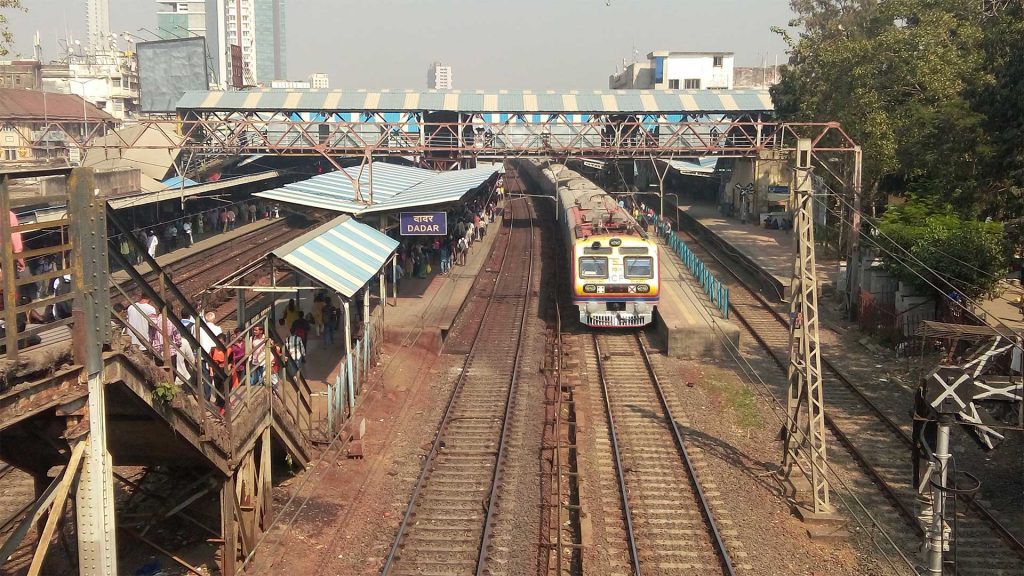
Mumbai Suburban Railway is the oldest railway system in Asia.
18. Largest Rail Museum
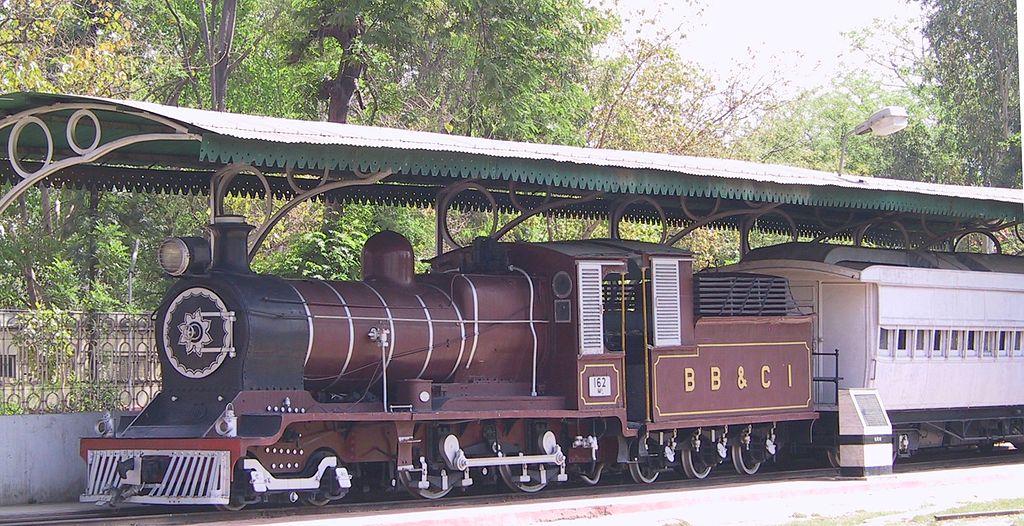
There are eight railway museums in India – Chennai, Delhi, Ghum, Pune, Kanpur, Kolkata, Mysore, and Tiruchirapalli. Out of these the Rail Museum in Delhi is the largest in Asia.
19. Railway Line 1.5 Times of Earth
If the tracks of Indian railways were to be laid out, they would circle the globe almost 1.5 times.
20. Maximum Stoppage
The Howrah-Amritsar Express has a total of 115 stops, which is the record maximum for an Express train.
21. The Toy Train
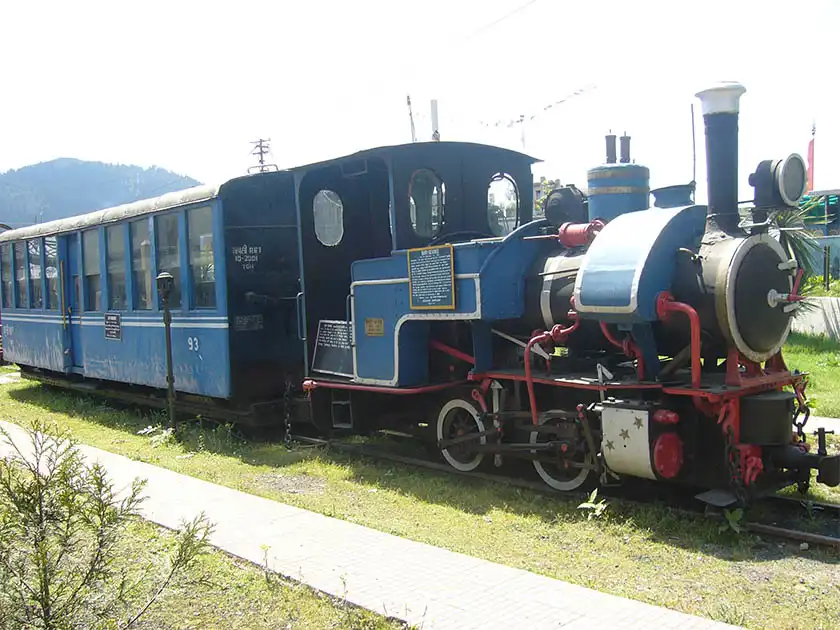
The Darjeeling Himalayan Railway, also known as the Toy Train, is a UNESCO World Heritage Site. It is also one of the oldest and narrowest gauge railways in India.
It runs from New Jalpaiguri to Darjeeling in West Bengal, traversing through the picturesque tea gardens and offering breathtaking views of the Himalayas.
22. The Longest Train Journeys in India
The Indian Railways operates some of the longest train journeys in the world, including the Vivek Express, which covers a distance of 4,189 kilometers from Dibrugarh in Assam to Kanyakumari in Tamil Nadu.
23. The Busiest Railway Station in India
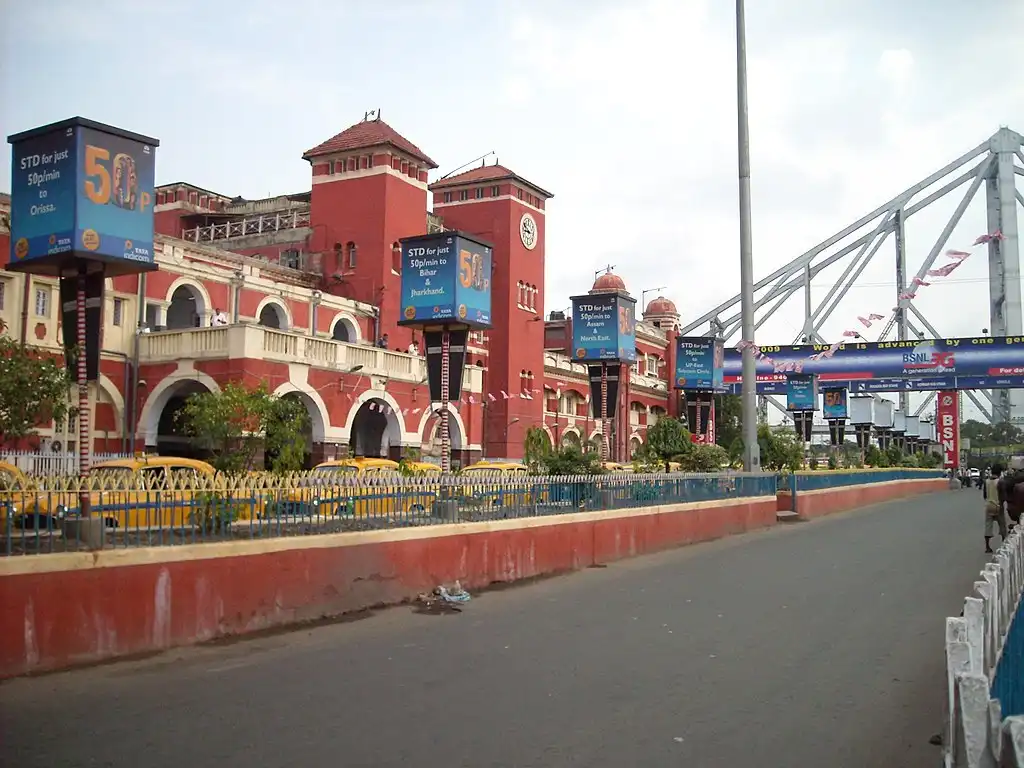
With an average of 6 lakh daily passenger footfalls, Howrah Junction Railway Station is the busiest railway station in India.
Howrah Junction Railway Station witnesses a massive inflow of passengers and trains daily. It is renowned for its historical significance, architectural grandeur, and strategic location on the eastern side of the Hooghly River.
As one of the oldest and largest railway stations, Howrah Junction accommodates a number of trains, including long-distance express trains, local commuter trains, and suburban services.
The station premises are bustling with travelers, vendors, and various amenities to cater to the needs of passengers.
24. Leading Luxury Train in the World
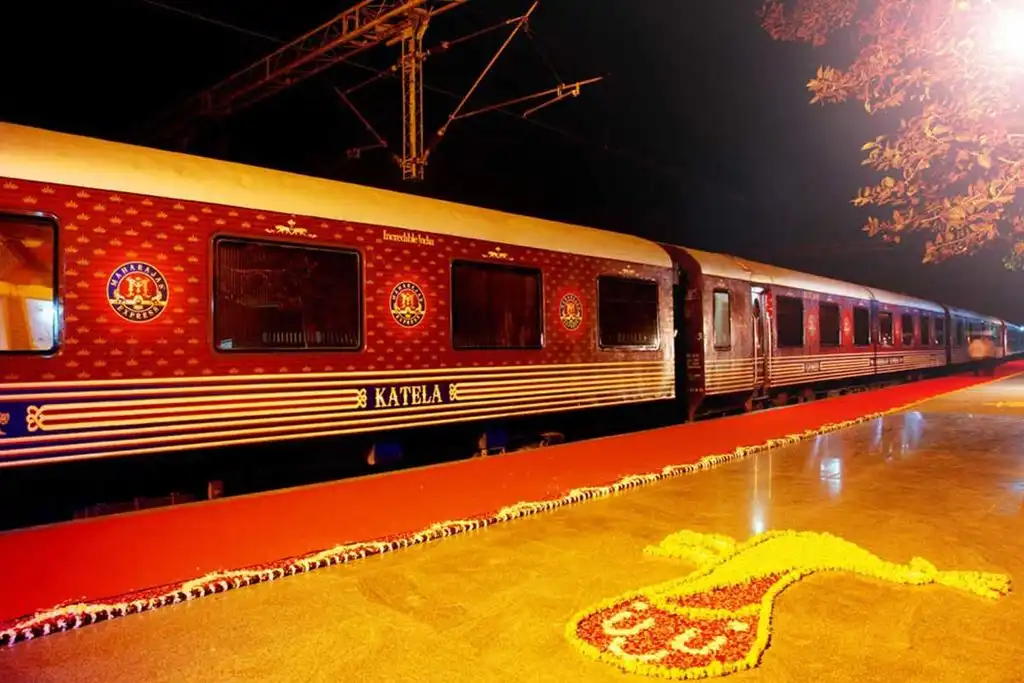
The Indian Railways introduced the concept of luxury trains like the Palace on Wheels and the Maharajas Express, which offer rich travel experiences to tourists.
It has been awarded as the Leading Luxury Train in World multiple times.
25. The Only Rack Railway in India
The Nilgiri Mountain Railway, a UNESCO World Heritage Site located in Tamil Nadu, is the only rack railway in India and is also. It is a significant tourist attraction and a popular mode of transportation in the Nilgiri Hills.
The Nilgiri Mountain Railway covers a distance of approximately 46 kilometers, starting from Mettupalayam and culminating in Udhagamandalam (Ooty), a hill station situated at an elevation of around 2,200 meters.
Passengers on the Nilgiri Mountain Railway can enjoy breathtaking views of tea plantations, lush forests, and panoramic vistas as the train chugs along the winding track. The charming blue-colored coaches and their slow-paced journey evoke a nostalgic and memorable experience for travelers.
26. The Royal Journey
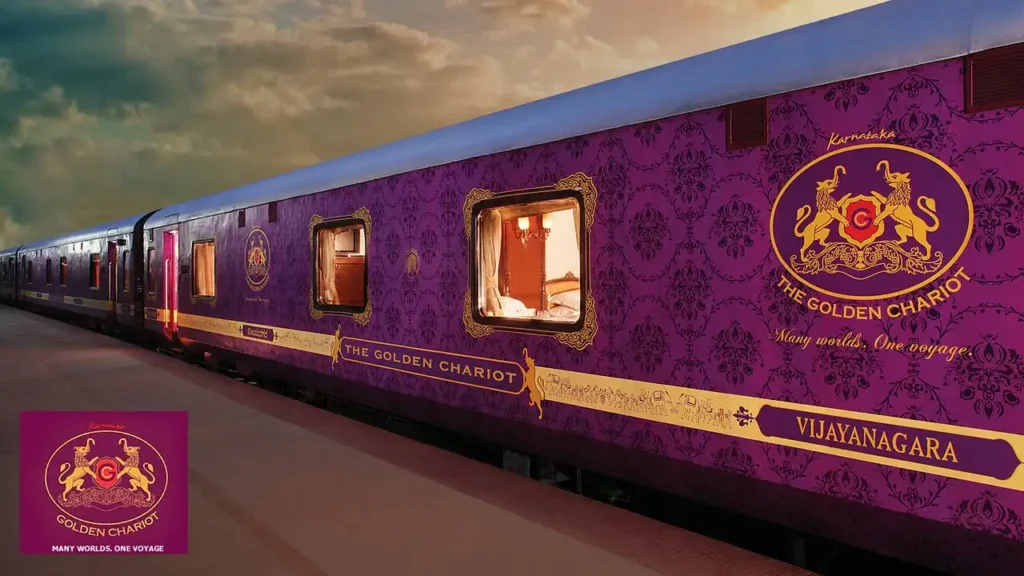
The Golden Chariot luxury train takes passengers on a royal journey through the cultural heritage sites of Karnataka and Goa.
The name comes from the famous stone chariot in Hampi, a UNESCO World Heritage Site in Karnataka.
27. Hospital on Wheels
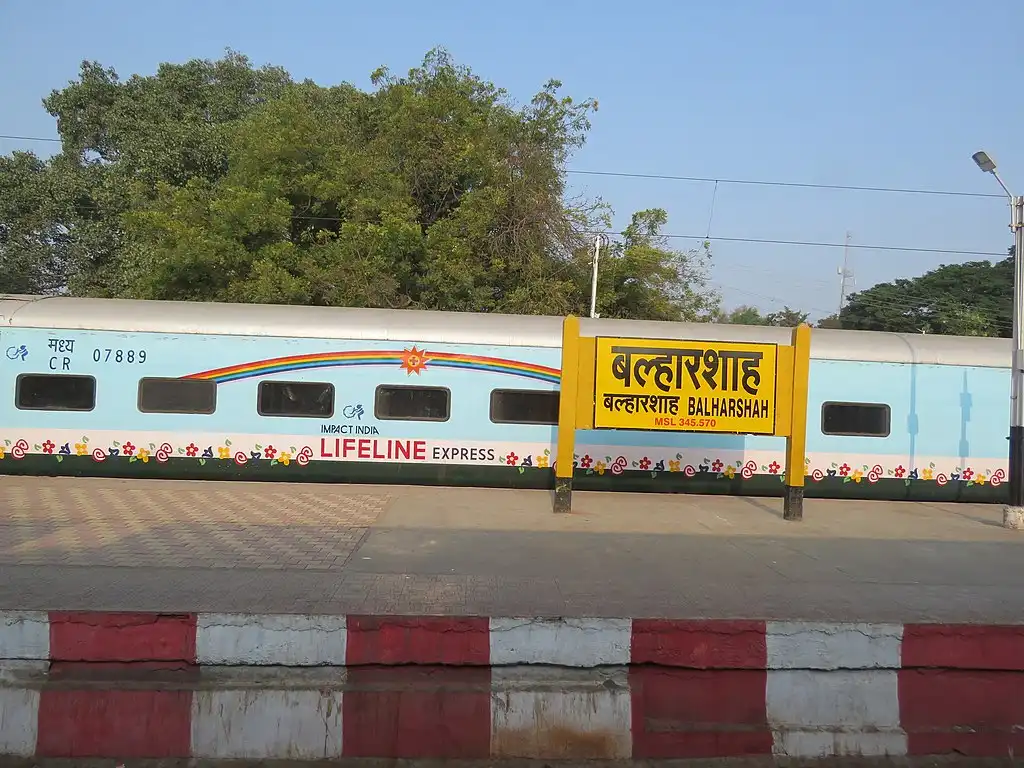
The Lifeline Express, also known as the “Hospital on Wheels,” is a unique train that provides medical services and surgeries to rural areas of India.
The Lifeline Express is a train converted into a hospital with specialized medical coaches. It travels to different locations across India, focusing on areas where medical services are limited or inaccessible.
The train has all the modern medical facilities, including operation theaters, diagnostic equipment, and patient wards. It offers various healthcare services, such as cataract surgeries, orthopedic surgeries, dental treatments, cancer screenings, and general medical check-ups.
28. The Oldest and Largest Railway Station
The Howrah Junction railway station in Kolkata, West Bengal, is one of the oldest and largest railway stations in India. It serves as a major transportation hub and a gateway to the eastern part of the country.
Howrah Junction boasts impressive architecture with its iconic red-brick building and a distinctive facade. The station building is a remarkable example of British colonial architecture, reflecting the city’s colonial past.
29. Indian Railways Has its Production Units
Indian Railways has its production units for manufacturing locomotives, coaches, and other railway equipment, such as Chittaranjan Locomotive Works and Integral Coach Factory.
30. The Indian Railways’ Mascot
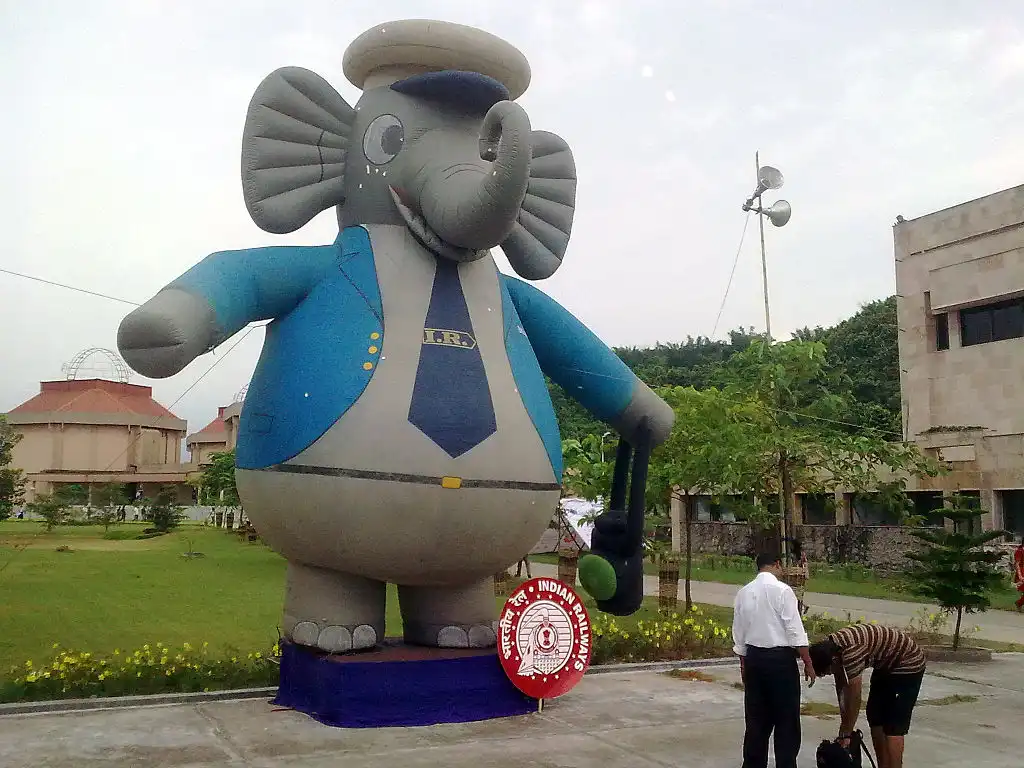
The Indian Railways’ mascot is “Bholu,” a cartoon elephant, which was introduced on April 16, 2002, to create awareness about safety among passengers.
Bholu is a friendly and smiling elephant character that represents the Indian Railways. The mascot is depicted as an anthropomorphic elephant wearing a railway conductor’s uniform.
The character has been used in various promotional materials, campaigns, and educational initiatives to engage with passengers and spread awareness about railway safety, cleanliness, and other important aspects.
31. The Busiest Urban Commuter Rail Networks
The Mumbai suburban railway system, also known as the “Mumbai Local,” is one of the busiest urban commuter rail networks in the world, carrying millions of passengers daily.
32. Classification for Trains
The Indian Railways has a unique classification system for trains, ranging from superfast trains like the Rajdhani Express and Shatabdi Express to local passenger trains.
33. Concept of “Garib Rath” Trains
The Indian Railways introduced the concept of “Garib Rath” trains, which are affordable air-conditioned trains aimed at providing comfortable travel options for economically weaker sections.
34. The Iconic Clock Tower
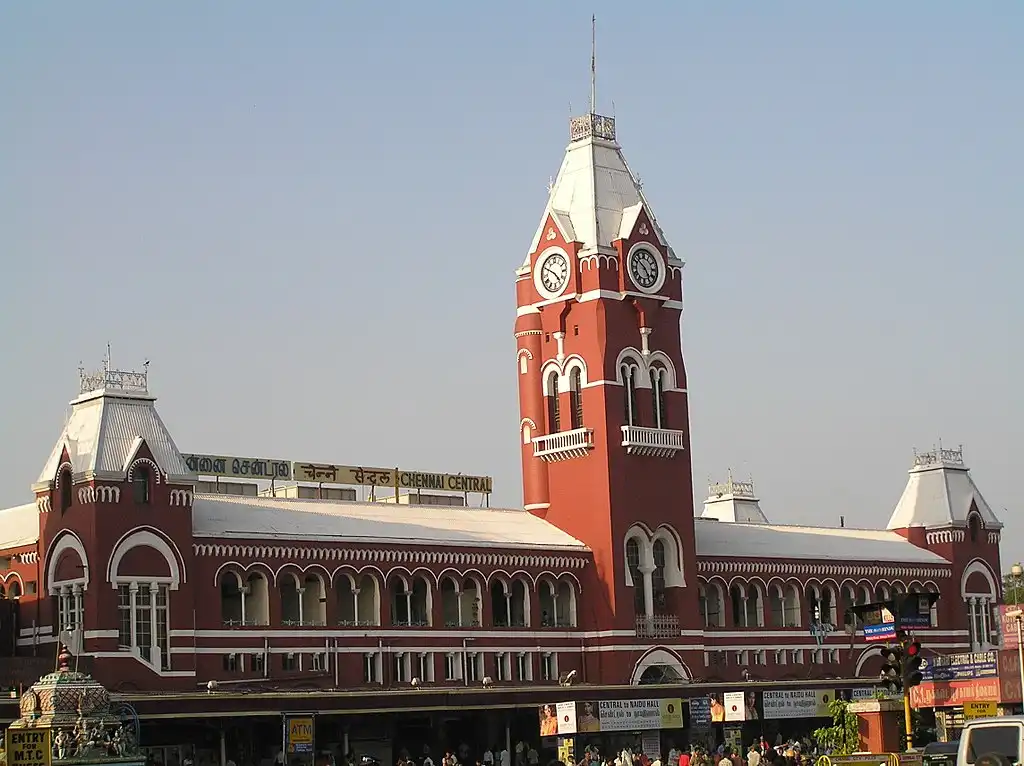
The Chennai Central railway station in Tamil Nadu is one of the most prominent landmarks in the city.
It is known for its iconic clock tower, which has become an integral part of the station’s identity. The tower stands tall and is adorned with ornate carvings and designs, making it a recognizable symbol of Chennai Central.
35. Dedicated Freight Corridors (DFCs)
The Indian Railways has a dedicated freight transport system called “Dedicated Freight Corridors” (DFCs) to enhance the efficiency of freight movement across the country.
36. Vistadome Coach
Indian Railways has a unique feature called the “Vistadome” coach, which provides panoramic views of scenic routes with large glass windows and glass roofs.
37. The Highest Railway Lines in the World
The Bilaspur-Manali-Leh railway line, currently under construction, will be one of the highest railway lines in the world, crossing the Himalayas and connecting Bilaspur in Himachal Pradesh to Leh in Ladakh.
The construction of the railway line would involve overcoming the challenges posed by the rugged and difficult terrain of the Himalayan region. The route would involve constructing tunnels, bridges, and other infrastructure to navigate through the mountains and high-altitude areas.
38. The Deccan Odyssey
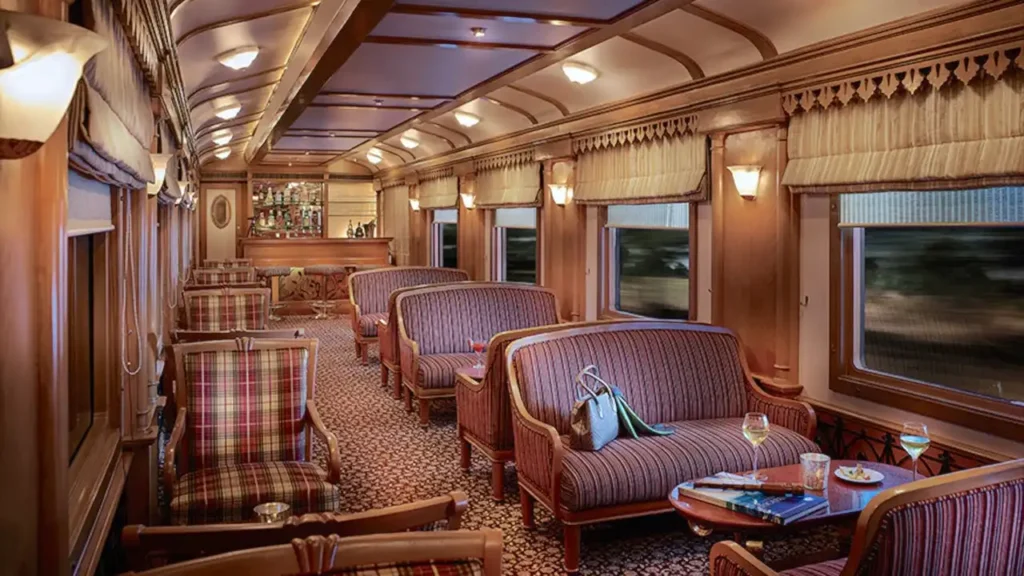
Indian Railways operates luxury tourist trains like the Deccan Odyssey, which covers prominent tourist destinations in Maharashtra and other parts of India.
The itineraries vary, but they often include destinations like Mumbai, Ajanta and Ellora Caves, Goa, Hampi, Kolhapur, and Nashik.
The train features luxurious cabins and suites that are elegantly designed and equipped with modern amenities. The cabins are air-conditioned and come with attached bathrooms, comfortable beds, and amenities like LCD televisions, Wi-Fi, and in-room safes. The train also offers facilities such as a lounge, a spa, a gym, a bar, and a restaurant.
The Deccan Odyssey provides a fine dining experience onboard, serving a variety of gourmet cuisines, including both Indian and international dishes. The meals are carefully prepared by expert chefs and are served in elegant dining cars, offering a blend of culinary delights and a luxurious ambiance.
39. Indian Railways Institute of Civil Engineering (IRICEN)
The Indian Railways has a dedicated institute, the Indian Railways Institute of Civil Engineering (IRICEN), for training and research in civil engineering and related fields.
40. Unreserved Ticketing System (UTS)
The Indian Railways launched the UTS (Unreserved Ticketing System) mobile app, allowing passengers to book unreserved tickets through their smartphones.
41. The Largest E-Commerce Websites in India
The Indian Railways catering and tourism arm, Indian Railway Catering and Tourism Corporation (IRCTC) is one of the largest e-commerce websites in India, handling online ticketing, catering, and tour packages.
42. The National Rail Museum
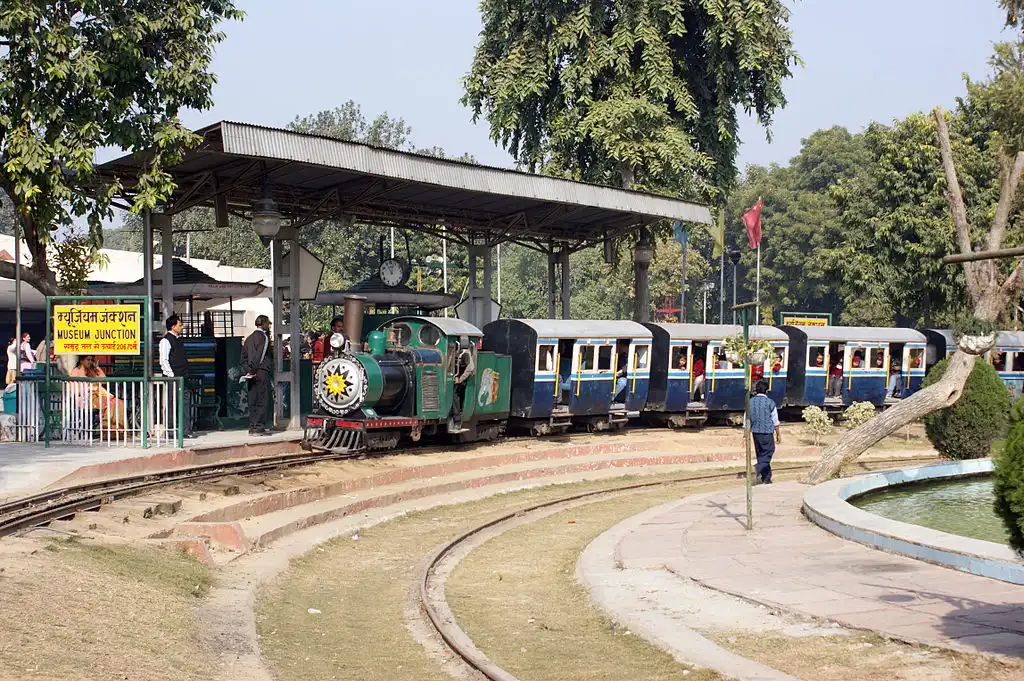
The Rail Museum in Delhi, officially known as the National Rail Museum, is an important attraction for rail enthusiasts and visitors interested in the history of Indian Railways.
The Rail Museum in Delhi showcases the rich history and heritage of Indian Railways, with a collection of vintage locomotives, carriages, and artifacts including the Fairy Queen, which is the oldest working steam locomotive in the world.
43. Railway Parcel Express
Indian Railways has a dedicated parcel service called “Railway Parcel Express,” allowing individuals and businesses to transport goods across the country.
It allows individuals, businesses, and organizations to send packages, merchandise, and other goods through the railway network.
44. The Indian Railways’ Fastest Train
The Indian Railways’ fastest train is the Vande Bharat Express, also known as Train 18, with a top speed of 180 kilometers per hour.
Vande Bharat Express offers modern amenities and passenger comforts. It consists of fully air-conditioned coaches, comfortable seating, onboard Wi-Fi, infotainment systems, GPS-based passenger information systems, and modular toilets.
The train is equipped with advanced safety features, including fire detection and suppression systems, an emergency braking system, and CCTV cameras for enhanced security and passenger safety.
The train was developed by Integral Coach Factory (ICF), Chennai, using indigenous technology and components. It is a significant milestone in India’s efforts to enhance its railway infrastructure and manufacturing capabilities.
45. Budgetary System
The Indian Railways has its budgetary system, separate from the central government’s general budget, known as the “Railway Budget.”
The Railway Budget in India has a long history dating back to the British era when the railway network was established. It served as a means to allocate funds specifically for the development and maintenance of the railway infrastructure.
46. The Indian Railways’ First Electric Train
The first electric train operated by Indian Railways was introduced on 3rd February 1925. It ran between Bombay VT (now Mumbai Chhatrapati Shivaji Maharaj Terminus) and Kurla in Maharashtra.
The electric train was powered by a 1,500 V DC overhead electrification system. This marked the beginning of electric train operations in India and paved the way for the electrification of railway lines across the country.
47. The Science Express
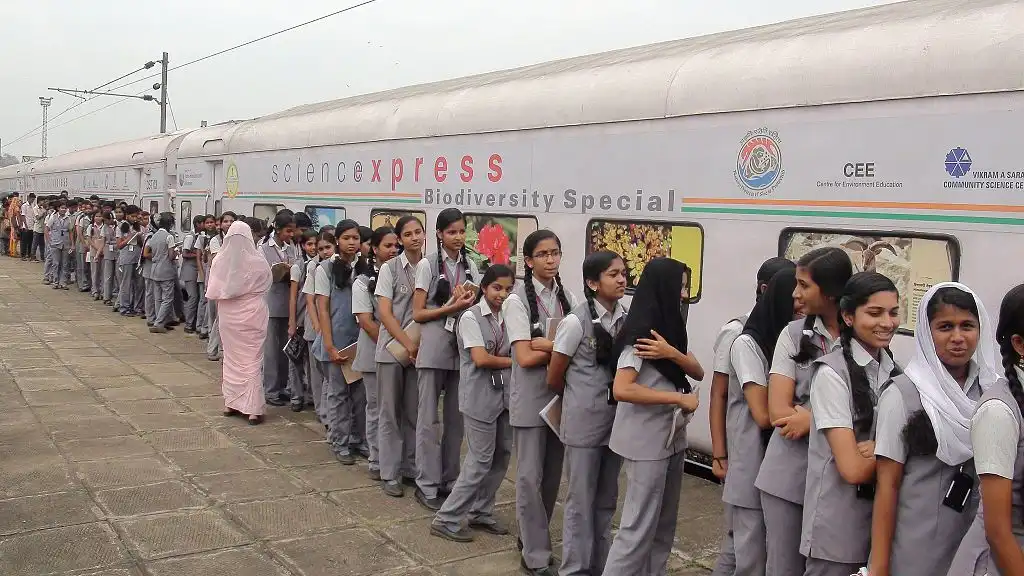
The Indian Railways operates a special train called the “Science Express,” which showcases scientific and technological advancements in the country through interactive exhibits.
48. The Indian Railways’ Eco-Friendly Initiatives
The Indian Railways has taken several eco-friendly initiatives to promote sustainability, reduce environmental impact, and enhance energy efficiency.
For example, Indian Railways installed solar panels on rooftops of railway stations and used bio-toilets in trains to promote a cleaner and greener environment.
49. “Hog” Technology
Indian Railways operates the “Hog” technology, which stands for “Head on Generation,” allowing trains to generate electricity for lighting, air conditioning, and other onboard services while running.
50. The Bullet Train
The Indian Railways’ “Bullet Train” project, also known as the Mumbai-Ahmedabad High-Speed Rail, is under construction and will be India’s first high-speed rail corridor, using Japanese Shinkansen technology.
51. Women Special
The Indian Railways’ “Women Special” trains, introduced in select cities, provide exclusive transportation services for women during peak hours.
52. The Railway Protection Force (RPF)
The Indian Railways has a dedicated organization, the Railway Protection Force (RPF), responsible for ensuring the safety and security of passengers, railway property, and infrastructure.
53. Rail Neer
The Indian Railways’ “Rail Neer” brand of packaged drinking water is popular among passengers, known for its quality and hygiene standards.
Rail Neer is produced and packaged at various Rail Neer plants located across different regions in India. The water undergoes a purification process to ensure its quality and safety.
54. “Train 20” Project
Indian Railways introduced the “Train 20” project, aimed at developing semi-high-speed trains with a top speed of 200 kilometers per hour, to enhance the passenger travel experience.
55. Healthcare System
The Indian Railways has its healthcare system, with railway hospitals and medical facilities catering to the healthcare needs of railway employees and their families.
56. “Rail Bandhu” Magazine
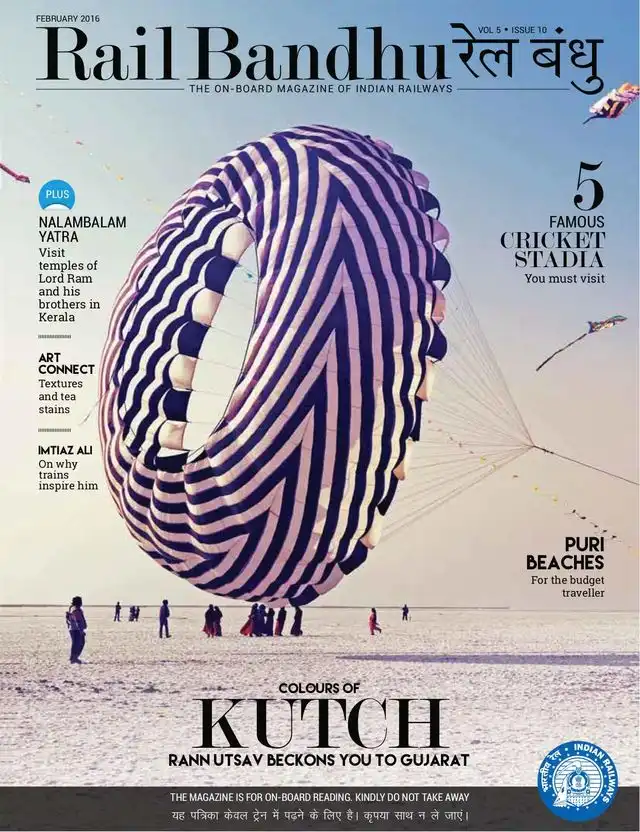
The Indian Railways’ “Rail Bandhu” magazine, available onboard trains, provides information, entertainment, and travel-related content for travelers.
57. Utkrisht Double-Decker Air-conditioned Yatri
The Indian Railways’ “Utkrisht Double-Decker Air-conditioned Yatri” (UDAY) Express is a specially designed train with double-decker coaches, offering enhanced seating capacity and amenities.
58. Indian Railways’ e-Lounges
Indian Railways has introduced the concept of “e-Lounges” at select railway stations, providing modern waiting areas with facilities like Wi-Fi, charging points, and entertainment options for passengers.
59. Railway Children India (RCI)
The Indian Railways’ “Railway Children India” (RCI) initiative focuses on the welfare and protection of vulnerable children found on railway platforms and trains, providing them with shelter, education, and support.
60. The First Sea Bridge in India
The Pamban Bridge, also known as the Pamban Rail Bridge or Pamban Viaduct, is a cantilever bridge located in Tamil Nadu, India. It connects the town of Rameswaram on Pamban Island with the mainland. The bridge spans the Palk Strait and is considered the first sea bridge in India.
The Pamban Bridge was completed in 1914 and plays a significant role in connecting the mainland with Rameswaram, which is an important pilgrimage site for Hindus. It allows trains to cross over to the island, facilitating transportation and pilgrimage for the devotees.
The bridge’s distinctive feature is its double-leaf bascule section, which can be raised to allow ships and vessels to pass through. This unique mechanism enables the bridge to accommodate maritime traffic while maintaining rail connectivity.
The Pamban Bridge stands as an engineering marvel and an iconic landmark in Tamil Nadu, attracting tourists and visitors who are captivated by its impressive structure and the scenic beauty of the surrounding area.
You may also like:
- 20 Incredible Facts About Indian History
- 20 Great Indian Discoveries & Inventions
- 20 Amazing Facts About India
- 20 Interesting Facts About Narendra Modi
Conclusion: Indian Railways Facts
In conclusion, the Indian Railways is a vast and remarkable network that holds numerous fascinating facts and achievements. From its extensive route network to its diverse range of trains, the Indian Railways has become an integral part of the country’s transportation infrastructure. The railway system has undergone significant developments over the years, encompassing technological advancements, remarkable engineering feats, and innovative initiatives.
Some notable highlights include the construction of iconic bridges such as the Vembanad Rail Bridge and the Bogibeel Bridge, which have enhanced connectivity and facilitated transportation across challenging terrains. The presence of bustling railway stations like Howrah Junction and Chennai Central exemplifies the scale of operations and the significance of the railways in connecting people and places.
Additionally, the Indian Railways’ initiatives for passenger convenience, such as the UTS mobile app and the Rail Museum in Delhi, demonstrate its focus on modernizing services and preserving the rich heritage of the railways.
Overall, the Indian Railways stands as a testament to India’s engineering prowess, cultural diversity, and determination to connect the nation through an extensive rail network. Its achievements, innovations, and continuous efforts toward improvement make it an integral part of India’s growth story and a source of pride for the nation.
We hope you would have enjoyed reading these 20 mind-blowing facts about Indian Railways.
How many of these facts about Indian Railways did you already know?
If we missed something, put them in the comment section below. We will publish them in our article.



